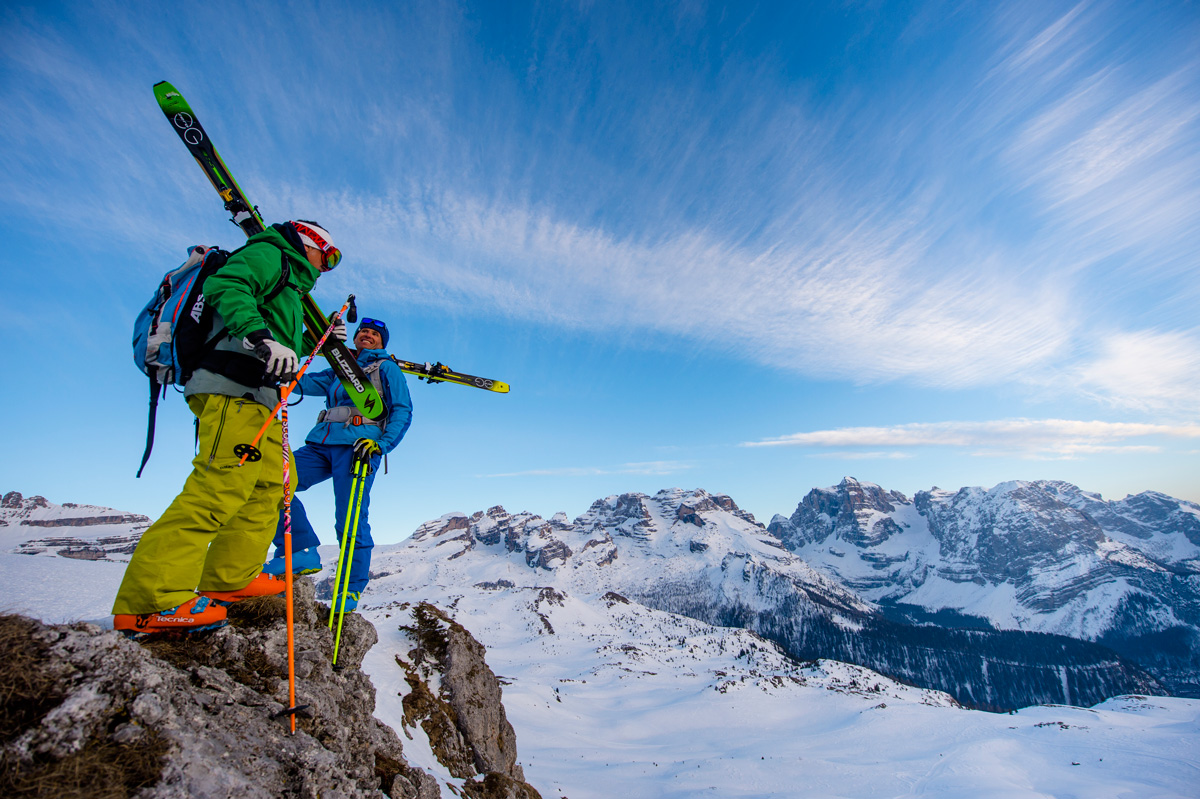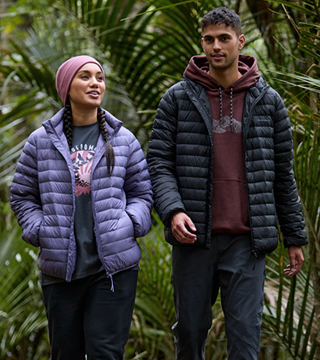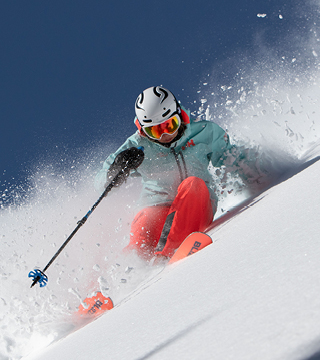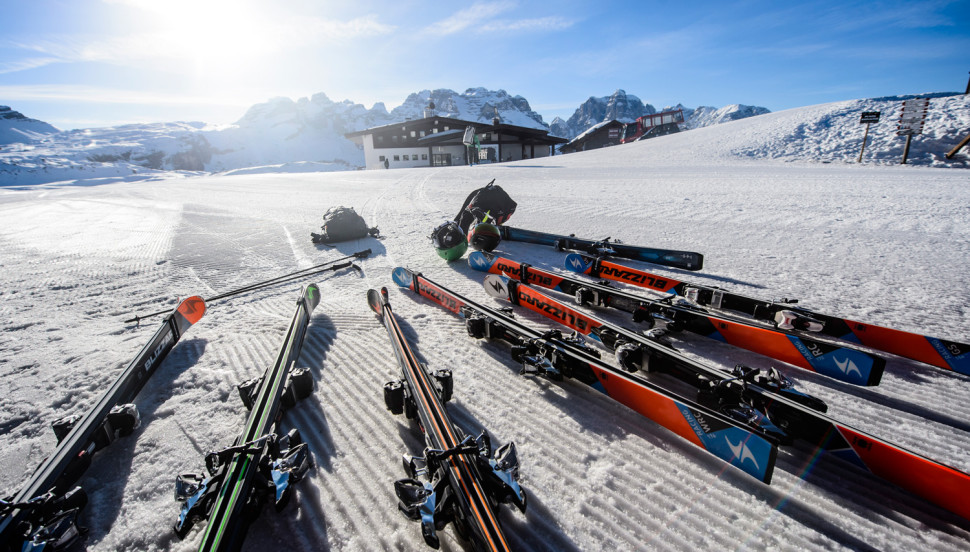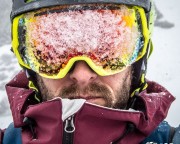Understanding the terminology is the first step to making better informed decisions when shopping for your next set of gear. We asked ski expert Jason Beacham to explain some of the specs you’ll see when shopping for skis and the effect that they’ll have on how your ski performs on snow. For more expert advice explore our blog or head in-store for everything you need to know to fuel your next adventure…
Step 1: Understanding ski terminology
Waist width
Exactly as described = How wide in mm a ski is at it’s narrowest point.
Today’s skis range from roughly 68mm-130mm in width.
How it affects you as a skier:
The narrower the ski, the shorter the time it takes to transition from one edge to the other. A narrower ski also sinks deeper into soft snow, making it more difficult to turn in soft or cut up snow. The wider the ski, the more flotation you have in uneven, chopped up snow, sugar snow, slush, and powder. However, on hard surfaces, a wider ski will require more leverage and effort to maintain a firm edge grip on hard/icy surfaces (this is why races skis are narrow and powder skis are wide).
This is the first thing you should look at when choosing a ski. Ask yourself “How much time (in a percentage base) do I spend on piste vs. off piste?” This percentage directly corresponds to how wide of a ski you should buy. 68-79mm = 100% on piste, 80-89mm = 70% on piste 30% off piste, 90-100mm = 50% on piste 50% off piste, 101-110mm = 30% on piste 70% off piste, 110+mm = 100% off piste. Now all these numbers have a slight +/- 3mm due to other factors like construction and turn radius.
Turn Radius
This is the size of CARVED turn that the ski would do if everything was perfect. Think of this number as a half circle in the snow. The smaller this number, the quicker turning and shorter turns the ski prefers to make. The larger the number, the longer the CARVED turns the ski prefers to make and the more effort it will take to perform CARVED turns. Generally turn radius in today’s skis can range from 10m to 28m
How it affects you as a skier:
Shorter turning skis like to be skied at slow to medium speeds and be CARVED, not skidded. Think of ski racing and slalom racing. These skiers don’t point the skis directly downhill and try and get to the bottom first, they do as many turns as they can before they reach the bottom. Short turn radius skis make it easier to perform carved turns on pistes. Due to the massive difference between the tip, waist and tail width, these skis sink in softer snow and can make them unpredictable in uneven conditions. Basically, stick to the groomed/prepared slopes as these like the snow to be smooth and hard.
Long turn radius skis prefer higher speeds and/or to be skied off piste. Due to the long turn radius, on pistes, these skis like big turns, which requires more speed and forces of gravity to get the to carve properly with big rewards when you do it. Due to the less significant difference between tip, waist and tail dimensions, these skis are more effortless to turn and control speed when off piste in uneven and especially soft snow.
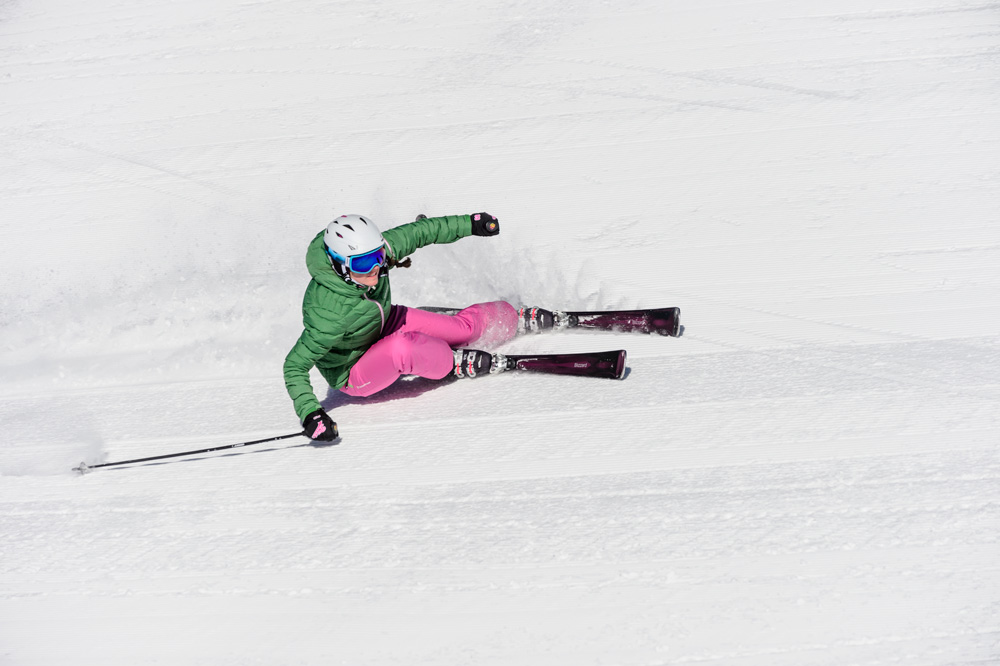
Rocker/Camber
This is the bow or upsweep of a ski if you were to lay it on a flat surface. If the ski sweeps up toward the tip and tail, it’s called rocker. If the ski only touches at the tip and tail and the middle is lifted, it’s called camber.
How it affects you as a skier:
Rocker lifts the wider parts of the ski off the snow which gives a “catch free” feeling when running the ski flat and transitioning from edge to edge. This also creates a more predictable turn initiation on all slopes. When in soft and uneven snow, rocker changes the approach angle of the ski, allowing it to float easily and steer predictably. Rocker also allows an easier release of the edge, allowing the ski to slide or skid easier.
Camber gives a spring effect to a ski. As you load it up with weight and the forces of gravity, a cambered ski will naturally want to return to it’s original position. This helps propel you from one turn to another and makes a ski feel “poppy.” Camber also helps keep you balanced over the center of your ski because as you get back or forward on your ski, it naturally wants to push you back to center. Camber also gives a very precise and positive edge feel to your ski.
Most skis these days have a hybrid of rocker and camber, with more of one vs. the other depending upon where the skis primary use is intended. Example: Carving skis will have little to no rocker in the tip and possibly tail, whereas powder skis might have little to no camber at all and full rocker. All mountain skis will typically now have rocker until just past the widest parts of the skis and camber between these points.
Tip/Tail Taper
This is moving the widest parts of the ski closer to the center of the ski, creating an elongated look to the tip and/or tail.
How it affects you as a skier:
Traditional shaped skis have the widest parts of the skis as far from the center as possible, creating an hourglass look to them. This was and still is great for maximizing the possible contact surface of the ski edge when in a carve. However, it can also make a ski hook up and initiate a turn unpredictably and requires more skill to use effectively. In an uneven surface or soft snow, it makes the ski dart in different directions and can create a diving effect. By pulling the wide parts back, the ski acts more like a boat hull or surfboard in water and allows very predictable steering. It also shortens the “effective edge” of a ski, which allows you to have a longer ski for floatation in soft snow, and when you are carving the ski on hard snow, have a shorter, easier to turn ski.
Again, today’s skis will have varying tip and tail taper to suit their primary intended terrain. Example: Carving skis will have little to no taper, allowing for maximum edge contact and control on hard surfaces. Powder skis will have a large amount of taper, allowing for longer lengths, more flotation, and better steering in ungroomed terrain.
Ski Core
All the bits that make up the inside of the ski.
Cores are very complex these days on skis. You will find many types of metal, wood, carbon fiber, Kevlar, basalt, fiberglass, resin, nomex, honeycombs, korroyd, foam and whatever else is the new material of the year that makes a ski better for you.
Every material has a different property. Stiffer products give a ski more power and a stiffer flex (good if you are heavy, or a strong skier). Softer products are easier to manipulate (better for light or less aggressive skiers). Lighter products are easier to carry, requiring less effort to ski or carry around the hill. Heavier products tend to stick to the snow better and charge through the rough stuff.
When choosing the ski core, drop your ego and consider physics.
Heavier and more aggressive skiers require stiffer skis that they can bend and push around the hill. Stiffer skis also hold an edge better and return more energy to the skier, rewarding those that can push them.
Softer skis require less effort to flex. These skis are easier to manipulate and can feel more playful. They favour lighter and less aggressive skiers. These skis will also let loose earlier, which will feel skittish to aggressive and heavy skiers.
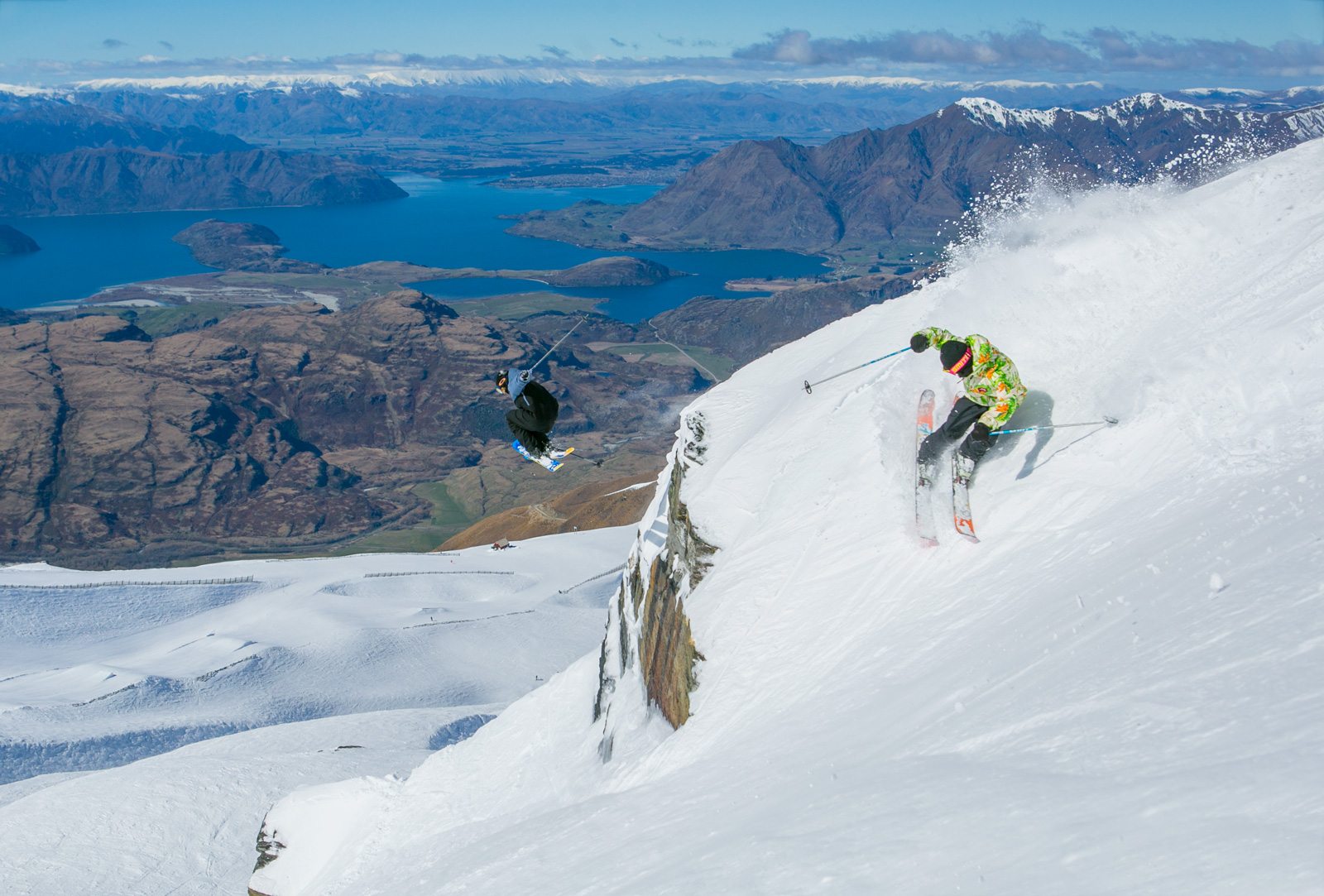
Quick skier tips
New technology is expensive. Carbon is expensive. If your ski has a fancy core, it won’t be cheap, but it will be better for your skiing.
Purchase a ski to your ability at a MINIMUM!! Something at or below your ability won’t allow you to progress, and might even make you regret your purchase.
On the other hand, don’t get something too far out of your league. If you are starting, don’t go buy the most expensive stuff. It will most likely be too much for you, and might even make you ski worse.
2 pair of skis is better than 1. Skis built to suit the conditions on the day will ALWAYS BE MORE FUN!!! If you can, buy skis for your 2 favorite conditions, mountains, locations etc. You can get one type now, and in a few years get the other, then alternate the upgrades and always have the best of both worlds. Purchasing something attempting to do everything will always have compromises at either end of the spectrum.
If you can only get one pair of skis (the majority of skiers), the best and most popular waist widths are between 85mm and 100mm. Get something with a mix of rocker and camber. Make sure it has a turn radius between 17m and 19m. Make sure it has at least a little bit of tip taper. The ski should also have a flex to suit your weight/aggression. If you buy one of these, it’s pretty hard to go wrong these days.
